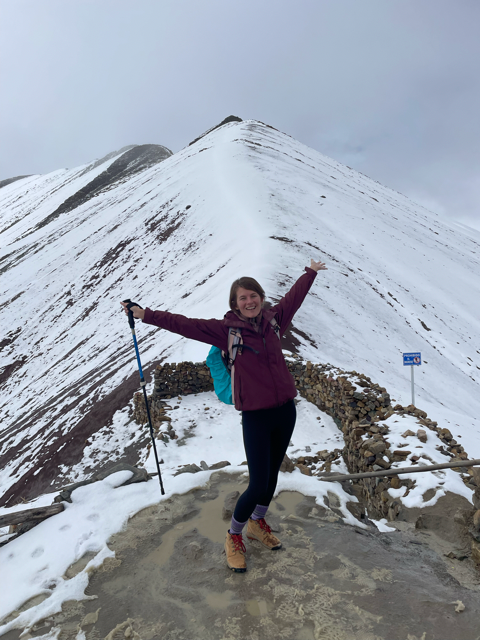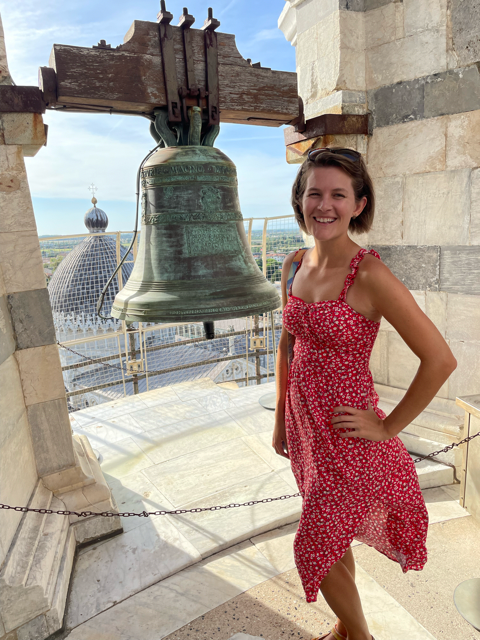
Cusco Altitude Guide: How to Acclimate, Avoid Sickness, and Enjoy Your Trip
Share
If you’ve been planning a trip to Cusco, you’ve probably heard about the altitude. At over 11,000 feet above sea level, it’s one of the first things travelers feel when they arrive — even before they see the city’s stunning Incan streets and mountain views.
Altitude sickness (known locally as soroche) can affect anyone, even the most seasoned traveler. But with the right preparation and itinerary, it’s easy to adjust and fully enjoy your time in Cusco and beyond.
And trust me — I learned this lesson the hard way.
When I first arrived in Peru, I did my trip completely backwards: I went to Rainbow Mountain first (which sits at nearly 17,000 feet!) before visiting Machu Picchu and the Sacred Valley. It made acclimating so much harder than it needed to be. So learn from me — start low and slow.
Here’s everything you need to know about Cusco’s altitude, how to avoid sickness, and how to plan your trip the right way.
What Is the Altitude in Cusco?
Cusco sits at about 3,400 meters (11,152 feet) above sea level — much higher than most cities travelers are used to.
That sudden jump in elevation means there’s less oxygen in the air, and your body needs time to adjust. Even healthy, fit travelers can feel light-headed, tired, or short of breath during the first day or two.
For comparison:
- Machu Picchu: 2,430 m / 7,970 ft
- Sacred Valley: 2,800–3,000 m / 9,200–9,800 ft
- Rainbow Mountain: 5,200 m / 17,060 ft (around the same height as Everest Base Camp)
So yes, Cusco is high — and Rainbow Mountain is very high.
What Causes Altitude Sickness?
Altitude sickness happens when you ascend to a high elevation faster than your body can adapt to the lower oxygen levels.
Common symptoms include:
- Headache
- Nausea or loss of appetite
- Dizziness or lightheadedness
- Fatigue or shortness of breath
- Trouble sleeping
Symptoms usually appear within the first 6–24 hours at high altitude. Most people adjust within a couple of days, but the first day can feel rough if you push too hard.
How to Acclimate to Cusco’s Altitude
The number one rule: take it easy when you arrive.
Spend your first 1–2 days exploring Cusco at a slow pace — visit local cafes, browse the markets, and let your body adjust before hiking or doing full-day tours.
Here are some tips that really help:
Rest and go slow: Even if you feel fine at first, the effects often catch up later in the day. Build in downtime your first 48 hours.
Stay hydrated: The dry mountain air dehydrates you quickly. Drink plenty of water and avoid alcohol your first day or two.
Eat light: Stick to soups, fruits, and easy-to-digest foods while adjusting. Heavy meals can make you feel worse.
Try coca tea or muña tea: Locals swear by these herbal teas for easing headaches and nausea. You’ll find them everywhere in Cusco — even your hotel may offer them on arrival.
Sleep well: Give your body time to recover. Early nights and naps are your best friends the first couple of days.
Medication & Remedies
If you’re concerned about altitude sickness, there are both medical and natural options:
Diamox (acetazolamide) is a prescription medication that can help prevent altitude sickness if taken a day before ascending.
Coca leaves, coca candy, and muña tea are natural Andean remedies you’ll see locals using every day.
Oxygen is available at many hotels and pharmacies around Cusco if symptoms become uncomfortable.
Always talk to your doctor before taking any prescription or over-the-counter medication.
Plan Your Itinerary for Acclimation
This is where I made my biggest mistake — and it’s the reason I want to help you plan smarter.
Instead of tackling Rainbow Mountain right away like I did, it’s better to start at lower altitudes and work your way up:
- Arrive in Lima (sea level). Spend a night to rest from your flight.
- Travel to the Sacred Valley (lower altitude than Cusco). Explore Pisac, Ollantaytambo, or Urubamba first.
- Visit Machu Picchu next (2,430 m / 7,970 ft) — it’s actually lower than Cusco.
- End your trip in Cusco once your body has adjusted.
- Save Rainbow Mountain or high-altitude treks for the very end.
This itinerary gives your body a chance to adapt gradually — and you’ll feel so much better for it!
What to Do If You Get Altitude Sickness
If you start feeling symptoms:
- Rest and slow down. Don’t try to push through it.
- Drink water and tea. Staying hydrated helps your body adjust faster.
- Avoid alcohol and caffeine. They can make dehydration worse.
- Use oxygen if needed. Many hotels offer oxygen tanks or can call for assistance.
- Seek medical help if symptoms get severe — Cusco has pharmacies and altitude clinics familiar with treating travelers.
Most travelers start feeling better within 24–48 hours once they rest and hydrate.
FAQs About Cusco’s Altitude
How long does it take to acclimate to Cusco’s altitude?
Most travelers adjust within 1–3 days.
Is Machu Picchu lower than Cusco?
Yes! Machu Picchu sits about 1,000 meters lower, so it often feels easier to breathe there.
Can you get altitude sickness at Machu Picchu?
It’s rare, but possible if you fly straight from Lima to Cusco and go immediately.
What’s the altitude at Rainbow Mountain?
Around 5,200 meters (17,060 feet) — more than 5,000 feet higher than Cusco! You definitely want to be well acclimated before visiting.
Learn From My Mistake
Altitude doesn’t have to ruin your trip — but it can slow you down if you don’t prepare. I learned that the hard way by going to Rainbow Mountain first, and I don’t want you to make the same mistake!
Take your time, drink plenty of water, and ease into Cusco’s altitude before tackling the big hikes.
Once you’ve adjusted, you’ll feel amazing — ready to explore the colorful streets, vibrant culture, and stunning landscapes that make Cusco one of my favorite cities in South America.


